Supported Living: A System in Crisis
Serving people with intellectual and developmental disabilities in their home community is a long-standing top priority for Washington state. Supported Living providers, also known as Community Residential Services, are the primary provider of these services in our state.Over 21 million service hours are delivered each year for approximately 4,600 clients.
Many individuals served in Supported Living have an accompanying mental health disorder with estimates that 35% of all persons with intellectual or developmental disabilities have an accompanying psychiatric disorder*. We all expect adequate care for individuals with intellectual and developmental disabilities in their home community. But adequate means that direct care staff are paid a living wage and are given the resources to do the job.
Fund Vendor Rate Increases to meet minimum wage increases, as well as bring wages closer to a livable wage:
To meet minimum wage increases. To bring DSP wages closer to a livable wage. To address the crisis.
- July 2019 – 4.4% Vendor Rate increase to keep pace with the minimum wage increase in January 2019
- January 2020 – 12.5% Vendor Rate increase commensurate with the minimum wage increase
- January 2021 - 3% Vendor Rate increase to keep pace with minimum wage and begin to stabilize the direct support workforce, address the ongoing crisis and meet the increasing demand for placements.
$87.4 M GF-S for 2019-21 Biennium
Securing the community provider base is job one in transforming lives!
DSP Turnover Continues
Supported living is the model we want, but isn't adequately funded.
Over the past five years, turnover has dramatically increased by 54%. Turnover in essential Direct Support Professional positions has been around 50% for the last three years! This turnover rate is disruptive to our clients and does not allow relationships to form or quality supports to be maintained. Providers are losing valued employees to Home Care, State Operated programs and fast food and other industries that can pay a livable wage.
The $2.25 per hour increase in the last biennium, while greatly appreciated, was not enough to keep pace with minimum wage. It was a 13.5% increase for most providers, while the statewide minimum wage increased by 21.4% over that same period. In fact, over the last decade providers have gone from being funded almost 24% above minimum wage to now only 6% above minimum wage! Without the necessary increases, providers will be funded well below minimum wage by the end of the biennium.
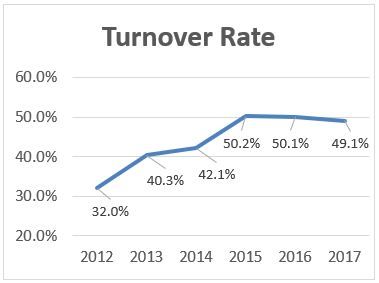
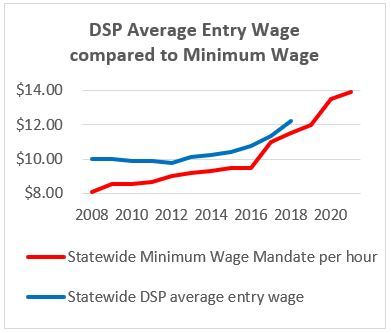
A Decade of Underfunding
Washington & Seattle Minimum Wage Mandates Compared to Average Starting Wage for Supported Living Direct Support Staff
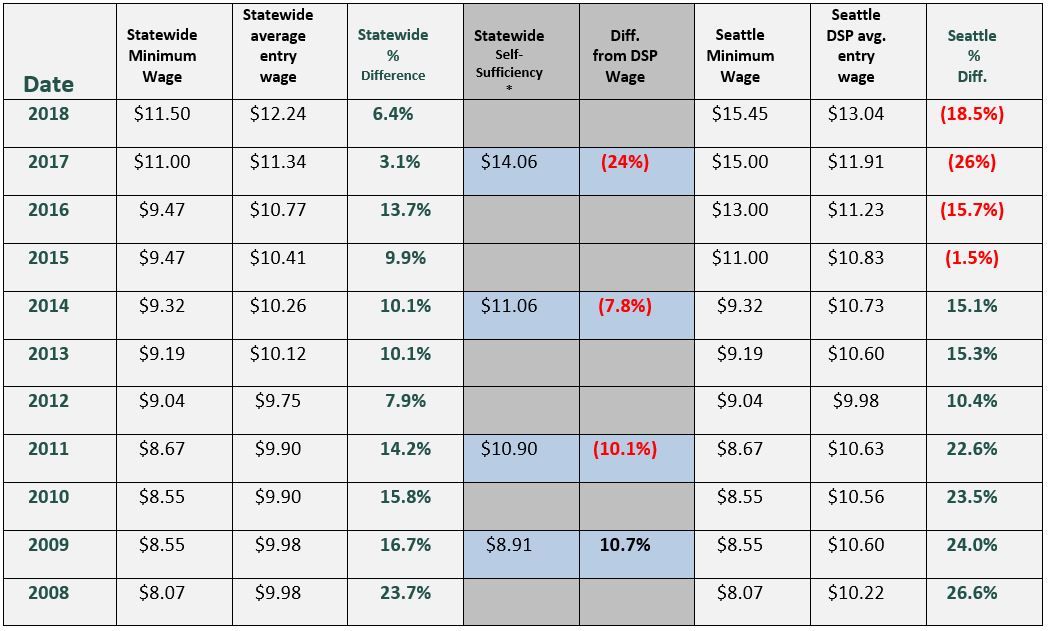
Diminishing Capacity and Service Availability
We can do the work, but not with half the staff
Because of these challenges, providers are not able to serve new clients being referred for services. DDA has continuously reduced the number of clients to be served in supported living since 2015. Right now, there are 176 fewer people served than originally budgeted/targeted over the last two bienniums.
With the reduced number of clients served, this means that more and more people continue to wait for services, some in costly state institutions, while others continue to be supported by their families. This reduced capacity has resulted in allotted money not being spent on critical Supported Living Services. In FY17, Supported Living was underspent by just over $23M when compared to the original expenditure allotment. For FY18, this trend has continued with an additional $6.4M in underexpenditures and the monthly underspend increasing every month. These funds could be used to serve people desperately needing and waiting for services but until the staffing crisis is addressed, this pattern will continue.
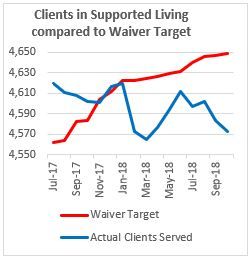
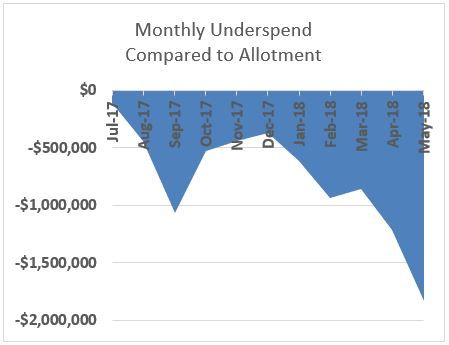
The current entry level wage in Supported Living is not a livable wage
In a recent study prepared for The Workforce Development Council of Seattle-King County, it was shown that the Self-Sufficiency Standard for a single adult in 2017 in Washington was $14.06 per hour**, which is 24% above the entry level wage in Supported Living. In 2009, DSP wages were 10.7% above the Self-Sufficiency standard, demonstrating that legislative funding has lost considerable ground with the cost of living. According to the report, the Self-Sufficiency Standard describes how much income families of various sizes need to make ends meet without public or private assistance in Washington. As such, Direct Support Professionals frequently must turn to public assistance to make ends meet.
If looking at a family rather than a single adult (which would be the demographic of most direct support professionals) the self sufficiency standard would be considerably higher. The self sufficiency standard takes into account housing costs, as well as costs for food, transportation, health care, child care, taxes and miscellaneous living expenses. There are also geographic differences in the self-sufficiency standards, with East King County being the highest at $15.93 for one single adult.
To simply continue the status quo of keeping just ahead of minimum wage, which will increases by almost 21% by the end of the next biennium, will only keep providers above minimum wage and do little to address the issues outlined. In order to serve new clients waiting for services and discontinue the trend of decreasing capacity, funding must be allocated to bring staff wages to a livable wage and address the ongoing crisis in the community residential system.
Other Supported Living Vendor Rate Facts:
▪ The current Indirect Client Support/ Administrative and Transportation rates have not increased for 15 years and over that period of time, Cost of Living has increased by 32.9% and the CPI has increased by 29.5%.
▪ Professional Service Rates for nurses have not increased for 15 years, while over that same period funding for other nursing rates within DSHS services have received rate increases ranging from 28.3% to 37.5%.



